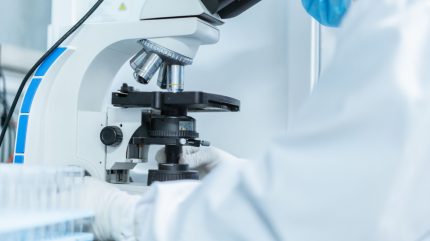
SELLAS Life Sciences Group has announced positive data from preclinical studies identifying the ASXL1 mutation as a significant predictor of response to SLS009, a selective cyclin-dependent kinase 9 (CDK9) inhibitor, in solid cancers.
Drawing on the elucidated biology of ASXL1 mutations, findings from the company’s clinical trials in acute myeloid leukaemia (AML), and reports of the frequent occurrence of ASXL1 mutations in certain solid cancers, the company conducted experiments.
The experiments involved patient-derived cell lines (PDCs) exposed to different concentrations of SLS009.
The inhibitory concentration (IC50) was determined for each cell line, with a high efficacy prespecified as IC50 < 100 nM. This threshold is notably lower than the standard effective compound definition (IC50 < 1,000 nM).
Negative controls included untreated cell lines, while the active negative control consisted of varying concentrations of revumenib, a drug used in hematologic malignancies.
Positive controls included cell lines treated with staurosporine at various concentrations. Staurosporine is a standard control compound for kinase inhibitors, known for its potent broad-spectrum activity in hindering most protein kinases at sub-micromolar concentrations.
The results indicated that in CRC (colorectal carcinomas) with high-level microsatellite instability (MSI-H), ASXL1 mutations were detected in seven out of 12 (58%) of PDCs, closely matching the predicted frequency of about 55%.
Overall, among the 18 solid cancer cell lines studied, ASXL1 mutations were observed in nine cell lines, while the remaining nine cell lines designated as controls showed no ASXL1 mutations.
In ASXL1-mutated cell lines, high SLS009 efficacy (IC50 <100 nM) was observed in six out of nine (67%) solid cancer cell lines, whereas in non-ASXL1-mutated cell lines, no high SLS009 efficacy was observed in any of the nine studied solid cancer cell lines (0%).
Specifically, in CRC MSI-H, high efficacy was seen in 57% of ASXL1 mutated cell lines, and in NSCLC, this figure was 100%.
In NSCLC, high efficacy (IC50 <100 nM) was seen in two out of two (100%) ASXL1-mutated cell lines, while none of the four non-ASXL1-mutated cell lines exhibited high efficacy.
No activity was seen in any of the studied cell lines with revumenib (negative control) at varying concentrations. Staurosporine activity was confirmed, but notably, SLS009 outperformed positive control staurosporine in five out of nine cell lines.
SELLAS chief development officer and senior vice president Dr Dragan Cicic said: “These findings are incredibly encouraging and validate our approach to developing a targeted solid tumour therapy. We are excited that our hypotheses were confirmed, marking, to the best of our knowledge, the first study to advance the identification of ASXL1 mutations as a potential biomarker for drug response in solid cancers.
“These critical findings are the missing pieces, complementing our existing safety and efficacy data in AML, and positions us strongly with SLS009 in solid cancers.”
The company has filed for provisional patent protection for using ASXL1 mutations as a predictive diagnostic approach to identify cancer patients who are likely to benefit based on clinical data and biological insights.



